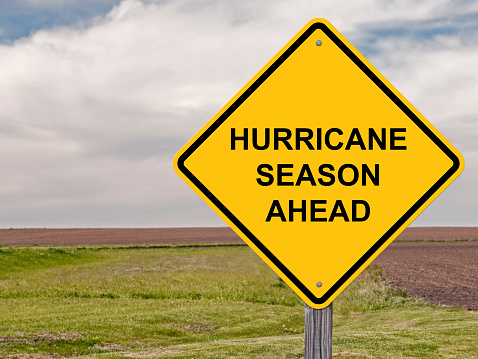Hurricane Season is Upon Us: How to Safeguard Your Business Properly
With hurricane season just around the corner, business owners must start taking steps to minimize property damage, as well as downtime. Consider taking the following steps to ensure you’re in the best possible position to counteract hurricane damage.
Hurricane season, which runs from June 1 through November 30, is just around the corner. Although the last couple years have been relatively mild, it only takes one strong storm to interrupt your business and life. While we have no control over what Mother Nature delivers, there are steps business owners can take to minimize the damage done, both financially and to our physical workspaces.
Since your employees and family rely on the business to support their lives, it pays to be prepared. Consider taking the following steps to ensure you’re in the best possible position to counteract hurricane damage.
Assess Risks to Your Infrastructure
Don’t make the mistake of thinking you’re immune to loss because you’re miles away from the coast. Call on a professional to inspect your building to identify any weaknesses. Use this to evaluate the impact these deficiencies could have on the continuity of your business. Complete maintenance projects and strengthen areas that need attention. Identify what business functions could be lost in the event of a direct or indirect hit and develop a disaster planning priority list accordingly.
Once you’ve secured the building as best you can, take pictures of your business property and building. Should you sustain damage in the storm, it will help you keep an inventory and offer proof of damage.
Review Your Insurance Policy
Most insurance companies restrict policyholders from making any changes to their policy once a hurricane watch or warning has been announced. Make an appointment to review your business policy with your agent. Check for coverage gaps that could severely impact how your company is indemnified after a loss. Don’t have flood insurance? Your agent can check what flood zone you’re in and advise you as to whether or not a flood policy should be part of your business insurance package. Keep in mind, many flood policies require a 30-day waiting period before taking effect. During your meeting, make sure you have the name and phone number of who you should contact in the event of a loss.
Identify Technological Vulnerabilities
What business tools are critical to the survival of your organization? How many of them comprise your technology infrastructure and how vulnerable are they to natural disasters? How is your data backed up and where is it stored? These are all questions you should be asking in the months leading up to hurricane season. Develop a technology plan based on these findings that ensure your business is interrupted for as little time as possible. Test and assess your recovery plan ahead of time to identify any potential weaknesses.
Store Valuable Information at an Off-Site Location
Since many areas hit by a natural disaster are without indefinitely, print out a paper backup of all mission critical data. Make copies of all important documents including insurance paperwork, contracts, licenses, and proof of ownership. Store them at an off-site location, preferably out of the path of the storm.
Create a List of Contacts
Comprise a list of up-to-date contact information for all relevant vendors. This should include your insurance agent, insurance carrier, and suppliers that are responsible for handling the aftermath of a natural disaster.
Define Each Team Members’ Role
If a hurricane hits, you might be working with a skeleton crew until everyone can get back to the area safely. Make sure each team member understands their role pre and post-hurricane. Assignments should include team leader, human resources, public relations, and information systems.
Develop a Crisis Communication Plan
As mentioned, you may not be able to depend on land lines or cell phones if a storm hits your area. To ensure business continuity. However, you’ll need to be able to communicate with your workforce. Determine how your team will deliver in the aftermath and test your plan. Text messaging is often more reliable than phone service. Another option is to set up a Facebook page, designed specifically for employee communication.
Assemble an Emergency Kit
If your area is affected, you may have to conduct business from a satellite office. Assemble an emergency kit of items you’ll need to continue your business on-the-go. This should include cash, company letterhead, business checks, a weather radio, and business-critical paperwork.
Whatever your compelling motivation might be to prepare for hurricane season, keep in mind that it’s always preferable to be overly prepared for less hurricane impact, than the reverse. Begin with one task on our list and check off items, as you go. If possible, delegate and assign tasks to your team, which will help give them more of a stake in the well-being of your company and will lighten the load for everyone. Hurricane preparedness only helps if you’ve actually completed the prep work and, in the long run, you’ll find the benefits far outweigh any initial costs. Do yourself and your business a favor and start protecting your investments today.






